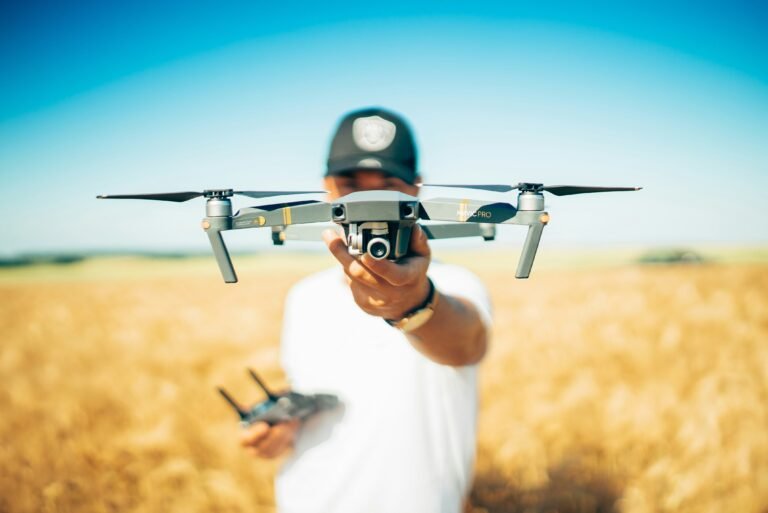Drone technology has rapidly transformed the way industries and governments operate, offering faster, safer, and more efficient solutions for tasks that were once time-consuming or hazardous. Drones, officially known as unmanned aerial vehicles (UAVs), are aircraft systems that can be remotely controlled or fly autonomously using onboard software, GPS, and sensors. These systems range from small hobbyist drones to large commercial and military-grade aircraft, each designed to serve specific functions across various sectors.
At the core of drone technology are several essential components. The airframe forms the structure of the drone and is usually made of lightweight, durable materials like plastic or carbon fiber. The propulsion system includes motors, propellers, and batteries that enable the drone to fly. A flight controller, which acts as the brain of the system, stabilizes and navigates the drone. Additional sensors, such as GPS units, barometers, gyroscopes, and inertial measurement units, help maintain accurate positioning and altitude. Drones are also equipped with cameras and gimbals to capture stable images and videos during flight. These are supported by remote controllers and communication systems that transmit data and video in real time to ground stations or mobile apps.
There are several types of drones based on design and usage. Multirotor drones, which include quadcopters, are popular for short-range tasks like photography and inspection. Fixed-wing drones resemble airplanes and are better suited for long-distance missions. Hybrid drones, which combine the vertical take-off ability of multirotors with the endurance of fixed-wing models, are becoming increasingly common. Single-rotor helicopters, though less common, can carry heavier loads and are used in industrial settings.
One of the most impactful uses of drone technology is in agriculture. Farmers now rely on drones to monitor crop health, spray pesticides, and survey large fields efficiently. This technology provides detailed aerial views, enabling better decision-making and reducing labor costs. In logistics, drones are used for package delivery, especially in remote areas. Companies like Amazon and Zipline have pioneered drone delivery systems to provide quick and contactless service.
Public safety agencies also benefit from drone technology. Police and emergency responders use drones for surveillance, search and rescue, and disaster management. In the aftermath of natural disasters, drones help assess damage, locate victims, and deliver emergency supplies to areas that are hard to reach by road. Similarly, drones support infrastructure maintenance by inspecting railways, bridges, pipelines, and electrical grids. They offer high-resolution imaging and thermal scanning, identifying faults without the need for dangerous manual checks.
Drone technology is also widely used in the media and entertainment industries. Film crews use drones to capture cinematic aerial shots that would otherwise require helicopters. In environmental conservation, drones track wildlife, monitor illegal logging, and survey ecosystems with minimal disturbance to nature.
Despite their many benefits, drones also face challenges. One of the biggest concerns is privacy, as drones can easily capture images and videos from the sky. Airspace regulation is another issue, with different countries having strict rules on where and how drones can operate. Battery life is a limitation for many commercial drones, restricting flight time. Weather conditions, such as high winds or rain, can also affect drone performance. Moreover, interference from other devices can disrupt control signals, especially in urban areas.
Governments around the world have implemented laws to regulate drone use. Most countries require commercial drone operators to be licensed. There are restrictions on flying above 400 feet and entering no-fly zones like airports or military bases. Operators are generally required to maintain a visual line of sight with the drone unless they have special authorization for beyond-visual-line-of-sight operations.
The future of drone technology looks promising, with advances in artificial intelligence, battery capacity, and 5G communication paving the way for smarter, longer, and more reliable drone operations. Emerging trends include autonomous drones capable of avoiding obstacles, drone swarms that work together, and passenger drones designed for urban transport. As the technology evolves, drones will continue to play a vital role in shaping modern infrastructure, commerce, and safety systems.







